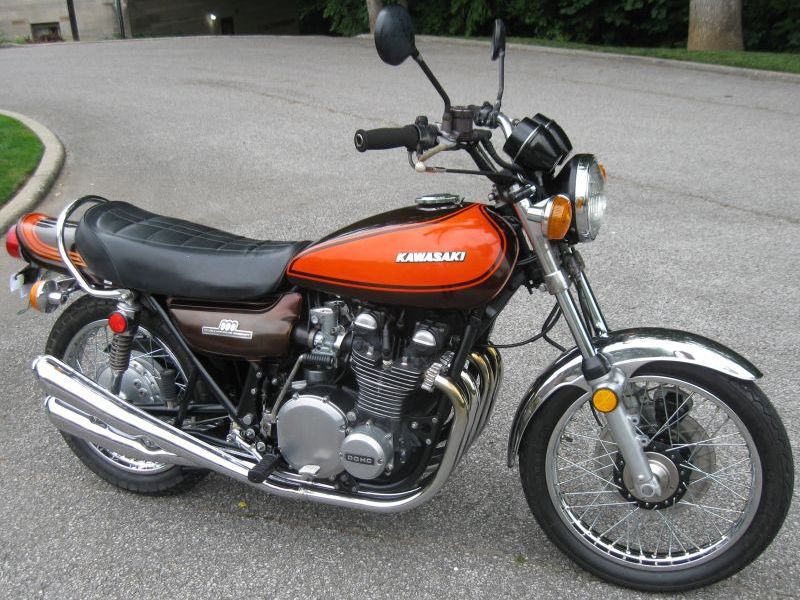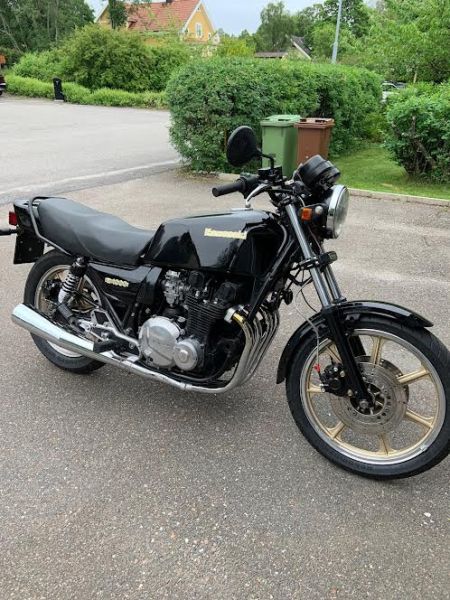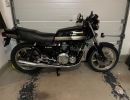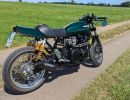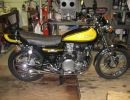When you are ready to do it with a gun and automotive paint, I'll be right here to walk you through it. It's actually easier than using a rattlecan, just requires more clean-up and learning how to mix.
Shoey,
if you are gonna clearcoat your work, with duplicolor clear, get some spray-out cards to lay on the color coats. If you are not sure where to get spray-out cards, email me, and I can mail you some. All they are, is a piece of card stock, with a hole in the middle, half of the card is black, and half of the card is white, with the two colors meeting at the hole in the middle. When you spray a coat of color onto the piece, you spray a coat of color onto the card. Then, when the line between the white and the black is not visable anymore, you have sufficient paint on the piece. This is a guide to show you when you have full coverage, so as not to waste paint, or apply it too thick, causing slow drying, cracking and other nasty side effects. The hole in teh middle allows you to lay it onto your work(when dry, of course) to see if the color of the piece matches the color of the paint on the spray out card. I know a lot of older bodymen, who used to say things like, "52 coats of hand rubbed laquer is the only way to paint, blah blah blaaahhh..." In reality, they are fools. True, the paint job looks like it was touched by the most brilliant hand ever created... then, after a year or so... crap. why? because back in "the day" painters painted everything with acrylic laquer (which hasn't been used by any of the automakers since 1978). Laquer is a non-catylist paint, which air dried hard, and shrank, also had very poor UV protection and therefore faded color, cracked, peeled, shrank, you name it...
Also, Laquer primer was nothing more than laquer paint, usually with no gloss additives and therefore, priming an object was merely painting it but with a cheap colorless paint, which could be sanded down, and was a lot cheaper than wasting actual pigmented paint on a vehicle. Now, as with color coats, laquer primer shrank also. The longer it was left to dry, the more it shrank. So, putting a showcar into a "primer" and leaving it that way for months was very common, so that the final paint didn't show as many inperfections. Even the scratch filler, or spot putty used back then was laquer paint, but made into a paste form. I'm sure you've heard of it, or seen it in stores. The most common brand is "Nitro-Stan." I still have a tube of it somewhere, for when I work on an old corvette, now and then. The system as a whole was not bad. you had regular plastic bodyfiller, spot filler(Nitro-Stan), laquer primer, and finally laquer paint. Laquer paint, being non-catylist, was sprayed with only the addition of a reducer, or "thinner." Laquer thinner is still around today, for use mainly as a clean-up solvent, more than anything. The basis for a laquer paint job was to thin out the laquer paint so that it could be sprayed out very evenly, without much orange-peel. Then, as the laquer thinner evaporated, this made the paint "hard" or dry. Due to the evaporative cooling process of laquer thinner, as with any evaporative liquid, condensation formed on the paintjob, as a result. This was especially true on a humid day. This made the paint job look hazy or cloudy, as opposed to shiney adn reflective. This is where the need for buffing came about. Laquer was so soft, even when fully dry, that a circular buffer with an abrasive compound could remove a lot of the orange peel and imperfections in the paint, with no need to wetsand. Laquer deffinitely had an advantage, here. Unfortunately, The shine wears off quickly, as well as the paint itself. Chemical strippers weren't even needed to remove a laquer paint job, since there was no chemical reaction to harden it on the workpiece. infact, some bodymen kept a primer gun, full of laquer primer and hardly ever cleaned out their primer guns. There wasn't a need to dump out the unused portion adn clean the gun. if the primer became too thick to spray, he would just add some more thinner, swirl it around and begin shooting. Laquer had another advantge.
Unfortunately, the benefits do not outweigh the drawbacks.
and I went off an a tangent... sorry... what I was getting to was, people who did those hand rubbed 52 coat paint jobs were actually using the final paint as a build primer and a body filler, and they were slowly sanding off the paint, as the applied more coats, so that the paint became 52 coats thick in some of the trouble areas. a decade or so later, even a pampered show car will show cracks and "crazing" as it is called, where the paint is too thick.
I am sure some of the guys on here who play with laquer primer and rattle cans will know what I am talking about, with shrinking problems. That's one of the things that will make you want to do it right. Sure, your paint job might look like you have been painting for years, and have the most skilled hand in the world, the day after you shoot it. Then, after a summer goes by, as you are waxing your pride and joy, you notice sanding scratches that weren't there before, and you notice that the wax isn't bringing the shine back, like it used to look. then, after a few years, you want to repaint it again, because it looks as weathered as it did before you started. Time is cruel to a paint job... sorry to say.
Anyhow, point is, lay it on thin, cover it with a good UV protectant clear coat, and don't do your bodywork with your primer and your paint. do the bodywork with hammers and dollies and plastic fillers. That's what they are there for. Some people say, "a good bodyman doesn't need 'bondo', he just isn't doing it right." wrong... a good bodyman knows when you use a hammer, when to use plastics and when things are ready for primer and paint. abuse of a product gives it a bad name, but 9 times out of 10, an inexperienced man will abuse the finish paint and primer, rather than use the reccomended amount of plastic fillers. Sad... but that's why I am offering advice to anyone wanting to know. It's not rocket science, in fact, a highschool tech student is learning how to work on your mercedes right now, and it will only take him 180 days, from 12pm to 3:30pm to learn well enough to be put in a working dealership. Scared? nah... don't be. Like I said, it's not rocket science.
I kinda rambled...
email me for sprayout cards
 Calum's RestoModded KZ1000 BOTM November '24
Calum's RestoModded KZ1000 BOTM November '24 BOTM for January 2024 RonnieV's KZ1000
BOTM for January 2024 RonnieV's KZ1000

















